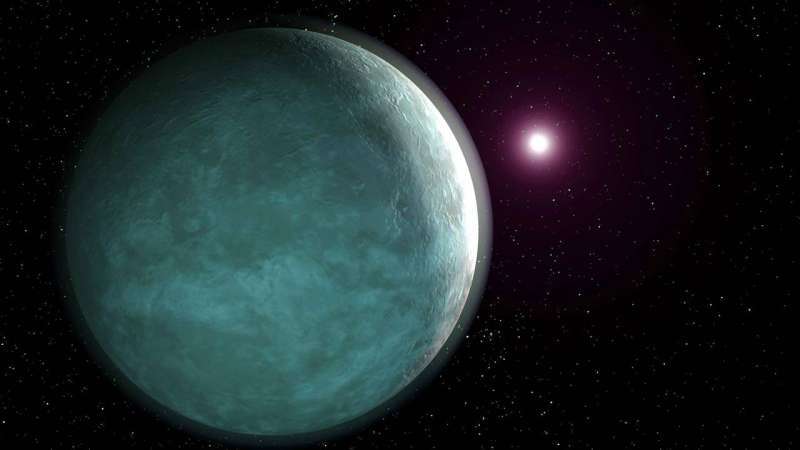Researchers said they have spotted a strange planet outside the solar system, very hot and slightly larger than Neptune, orbiting a sun-like star every 19 hours and apparently enveloped by metallic clouds that reflect most of the light falling on it back into space.
“It’s a giant mirror in space,” said James Jenkins, an astronomer at the University of Diego Portales in Chile, and a co-author of the research published in the journal Astronomy and Astrophysics.
The Al-Rai daily quoting Reuters said Portales added that the planet reflects about 80 percent of the light that falls on it, making it the most reflective object known in the universe. Venus, the brightest object in the sky besides the moon, is the most reflective object in the solar system, and it is covered in clouds of toxic sulfuric acid.
Venus reflects about 75 percent of the light it receives, while Earth reflects only about 30 percent.
The planet is called “LTT 9779b”, and it and its star are located in the Milky Way, approximately 264 light-years from Earth.
The planet’s diameter is 4.7 times larger than Earth’s, and it orbits so close to its star that it is closer than Mercury to the sun and 60 times closer to Earth’s orbit.
In light of the solar radiation emitted from its star, its surface temperature is about 1800 degrees Celsius, which is hotter than molten lava.
The researchers were surprised by the existence of an atmosphere for that planet in light of its close proximity to its star.
What prompted them to believe that the surrounding clouds are metallic, a mixture of titanium and silicates that make up most of the rocks of the Earth’s crust, is that the atmosphere containing water clouds, such as the Earth’s, would have been eroded long ago by solar radiation.
“We even think that clouds can condense into droplets and titanium rain in parts of the atmosphere,” Jenkins said.
The researchers studied the planet using the European Space Agency’s Cheops orbital telescope.
“No other planet like this has been discovered so far,” said astronomer and lead author of the study Sergio Hoyer of the Marseille Astrophysical Laboratory in France.
There seems to be an tidal relationship between that planet and its star like the moon has with the earth, with one side always luminous facing the star and another always dark on the opposite side.
All known planets that revolve around their stars in less than one Earth day are either gas giants similar in composition to Jupiter, the largest planet in the solar system, but hotter due to solar radiation, or rocky ones smaller than Earth and lacking an atmosphere.
The researchers wonder if LTT9779b, which is classified as a “super hot Neptune”, might have evolved into a gas giant only to lose most of its atmosphere, or if it started out at its current size.
Scientists have discovered more than 5,000 planets outside the solar system called exoplanets, many of which have completely different characteristics than the eight planets that make up the group.

